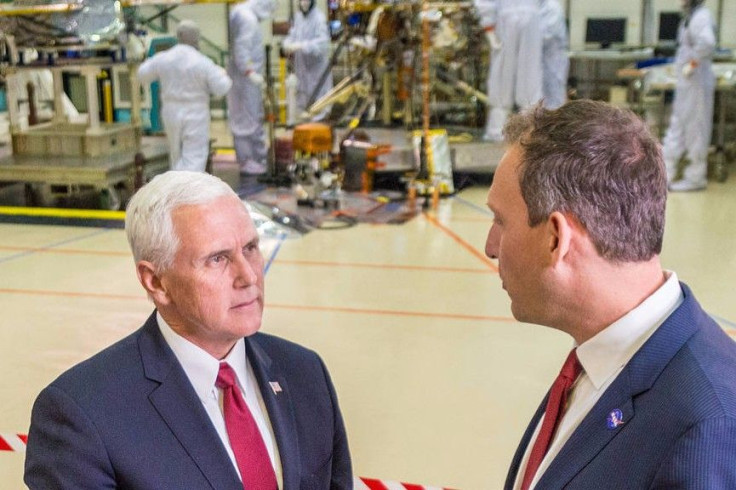Mike Pence Visits Newest Spacecraft Bound For Mars, The InSight Lander

Vice President Mike Pence is embracing his role as Chairman of the newly-revived National Space Council. Following the first meeting of the council earlier this month, where he announced a new goal of sending humans back to the moon, he’s continued touring NASA labs and learning more about the space programs and missions to send humans to deep space, and Mars.
On Thursday, he paid a visit to the Mars InSight Lander at the Lockheed Martin Space Systems facility in Denver, Colorado. This time he didn’t touch anything labeled, "Do not touch." He did however chat with NASA’s head of science, Thomas Zurbuchen, about the craft the springtime launch that’s planned for it.
Yesterday, @VP Pence & NASA Science Lead @Dr_ThomasZ visited InSight, our next Mars mission, @LockheedMartin in CO: https://t.co/bgJn5PcSX1 pic.twitter.com/Qh1g4mIcG6
— NASA (@NASA) October 27, 2017
The InSight lander will be the next NASA mission to head to Mars. Its goal is to learn more about the planet before the agency potentially sends humans to the Red Planet. The name InSight stands for "Interior Exploration Using Seismic Investigations, Geodesy and Heat Transport," a lengthy name for the lander that will explore and study the deep interior of Mars.
When the lander launches in the spring from the Vandenberg Air Force base in California it will make history as the first interplanetary launch to take place from the West Coast of the United States. Once it lands on the planet in November 2018 it will make history again as the first mission to ever explore the depths of Mars, according to NASA. The agency’s hope is that the mission will give researchers more information about how the planet, and possibly other rocky planets as well, formed and evolved over the years.
While at Lockheed Martin, Pence also visited the virtual reality lab there to see a demo of the Orion craft that will launch on the Space Launch Rocket System to bring humans to space in the future. The craft will launch from the new spaceport at the Kennedy Space Center in Florida when the first missions happen in the early 2020s. The Orion craft will be key not only for exploration of Mars but also for bringing humans back to the moon and to deep space.
Earlier this month Vice President Pence announced that the National Space Council would begin developing plans to send humans back to the moon. Additionally he said there would be a new emphasis on NASA developing the technologies to launch humans into space again, something it currently relies on the Russian Space Agency Roscosmos to do for trips to and from the International Space Station. The Orion craft would offer another route to space that didn’t involve reliance on Roscosmos
© Copyright IBTimes 2025. All rights reserved.




















